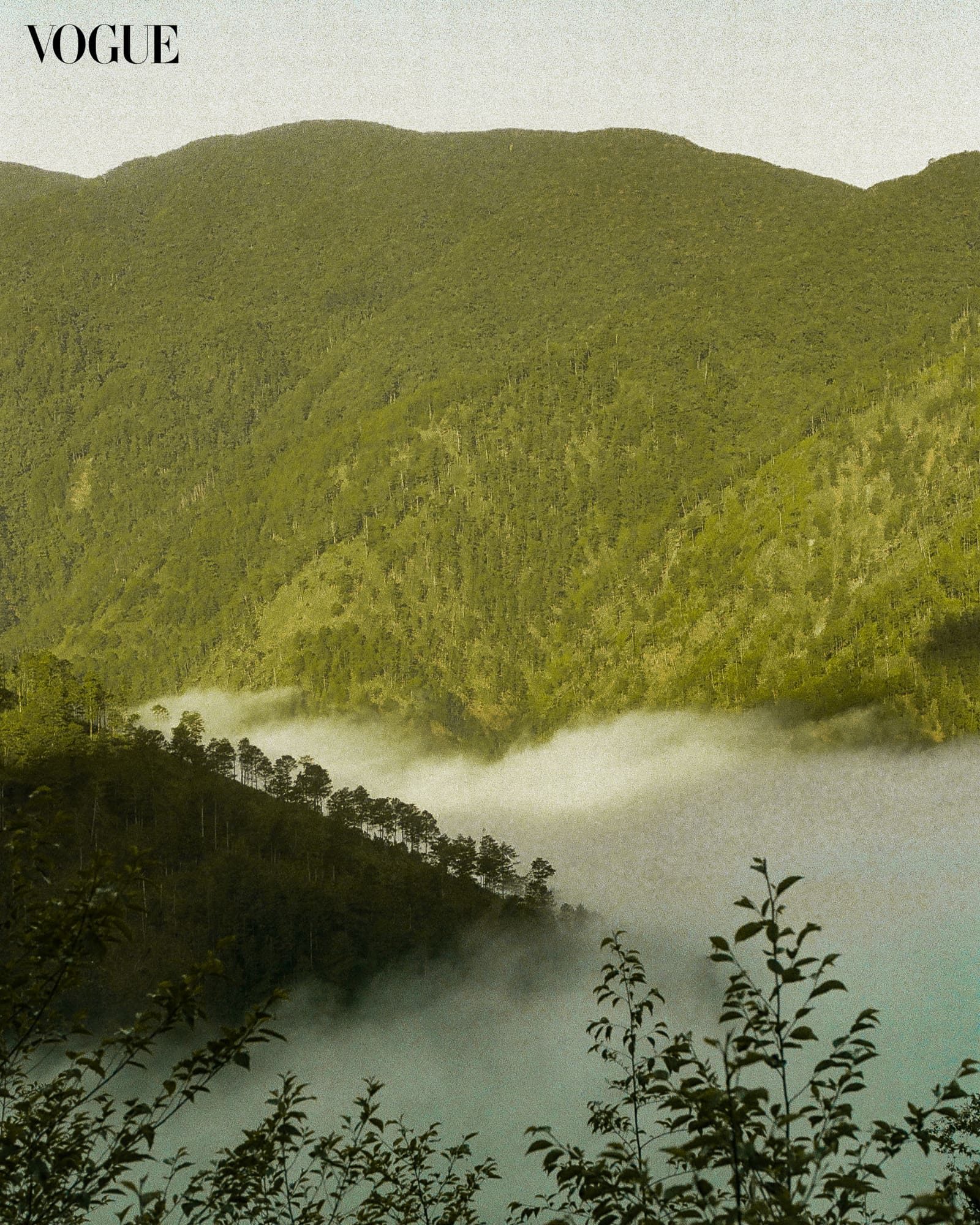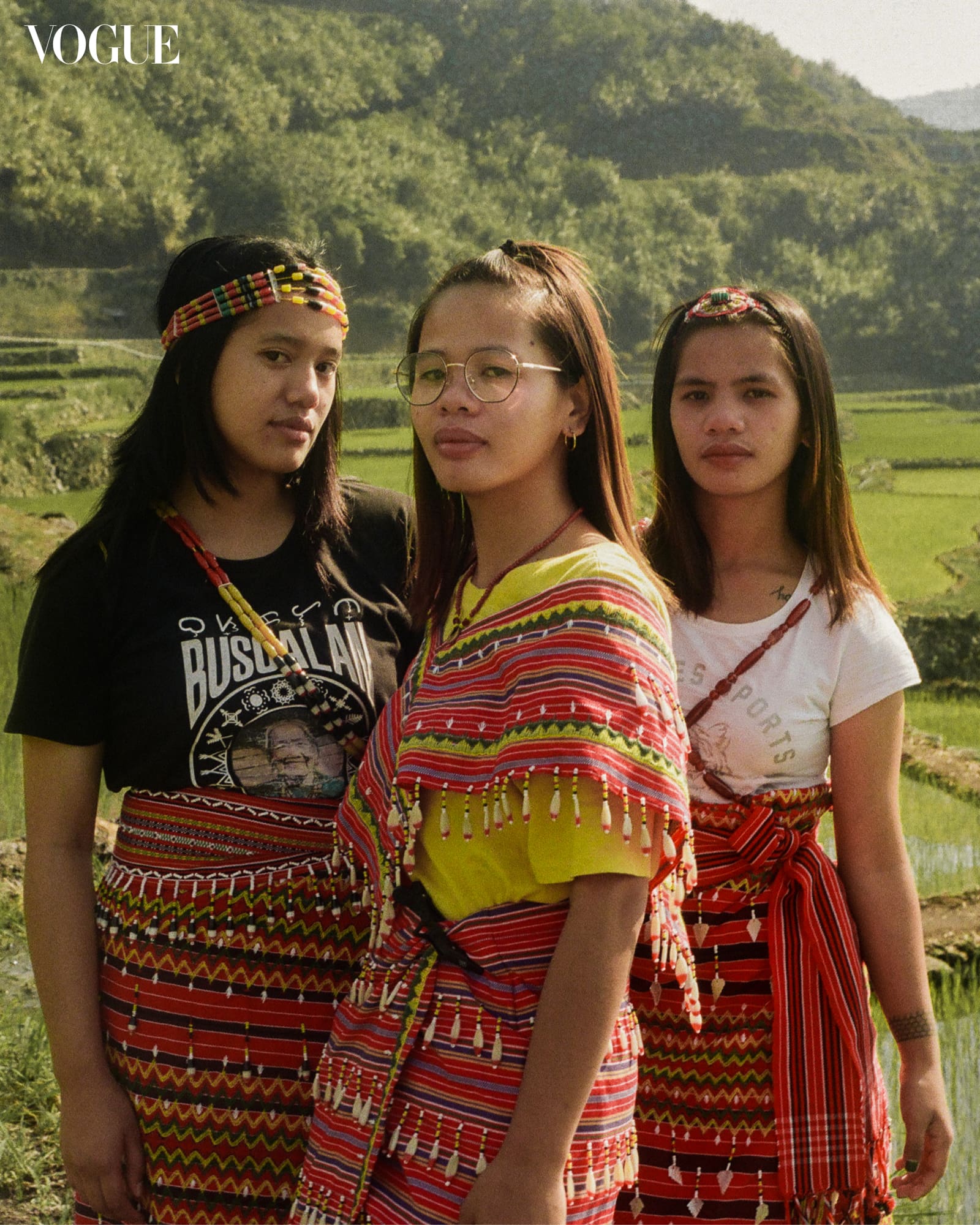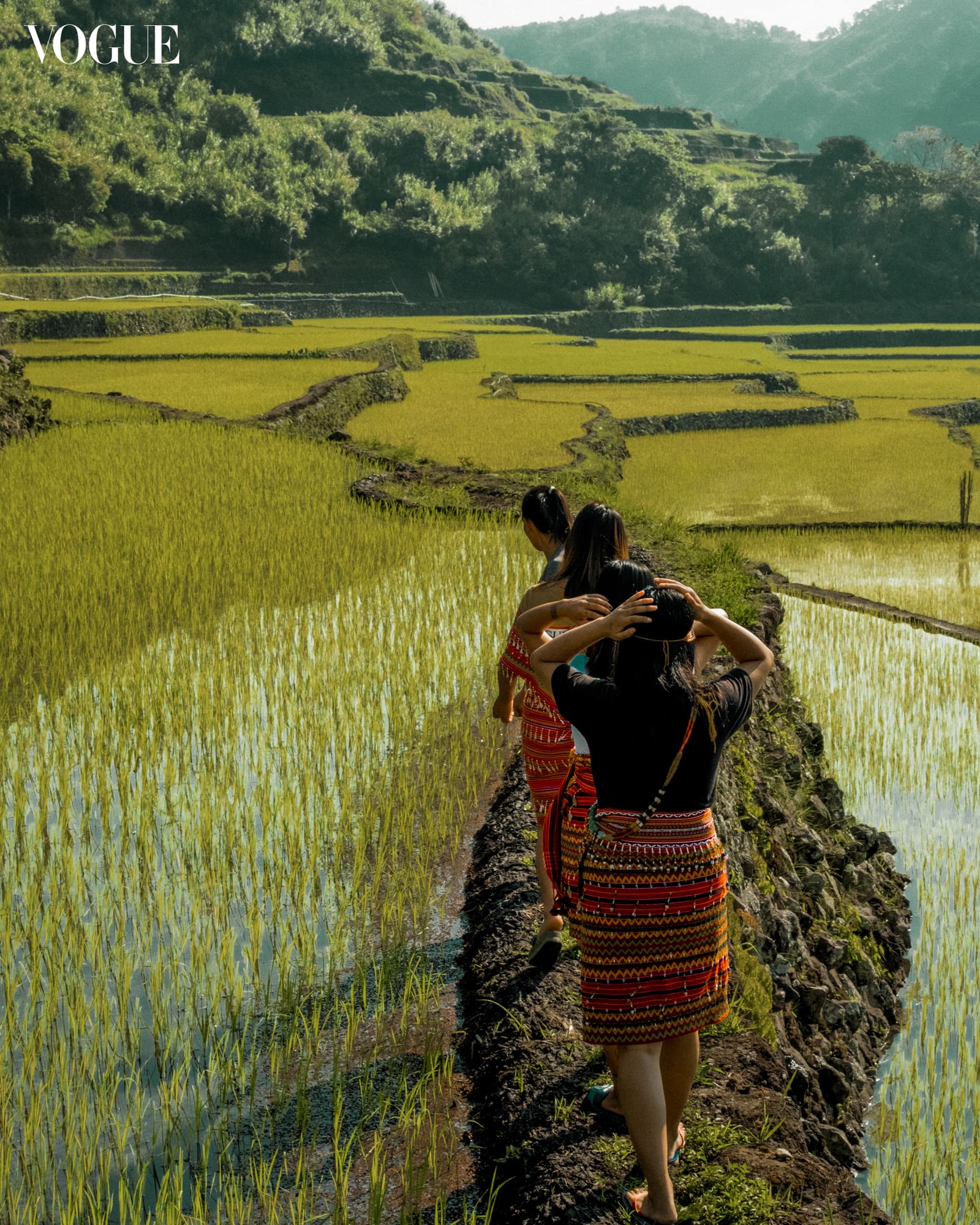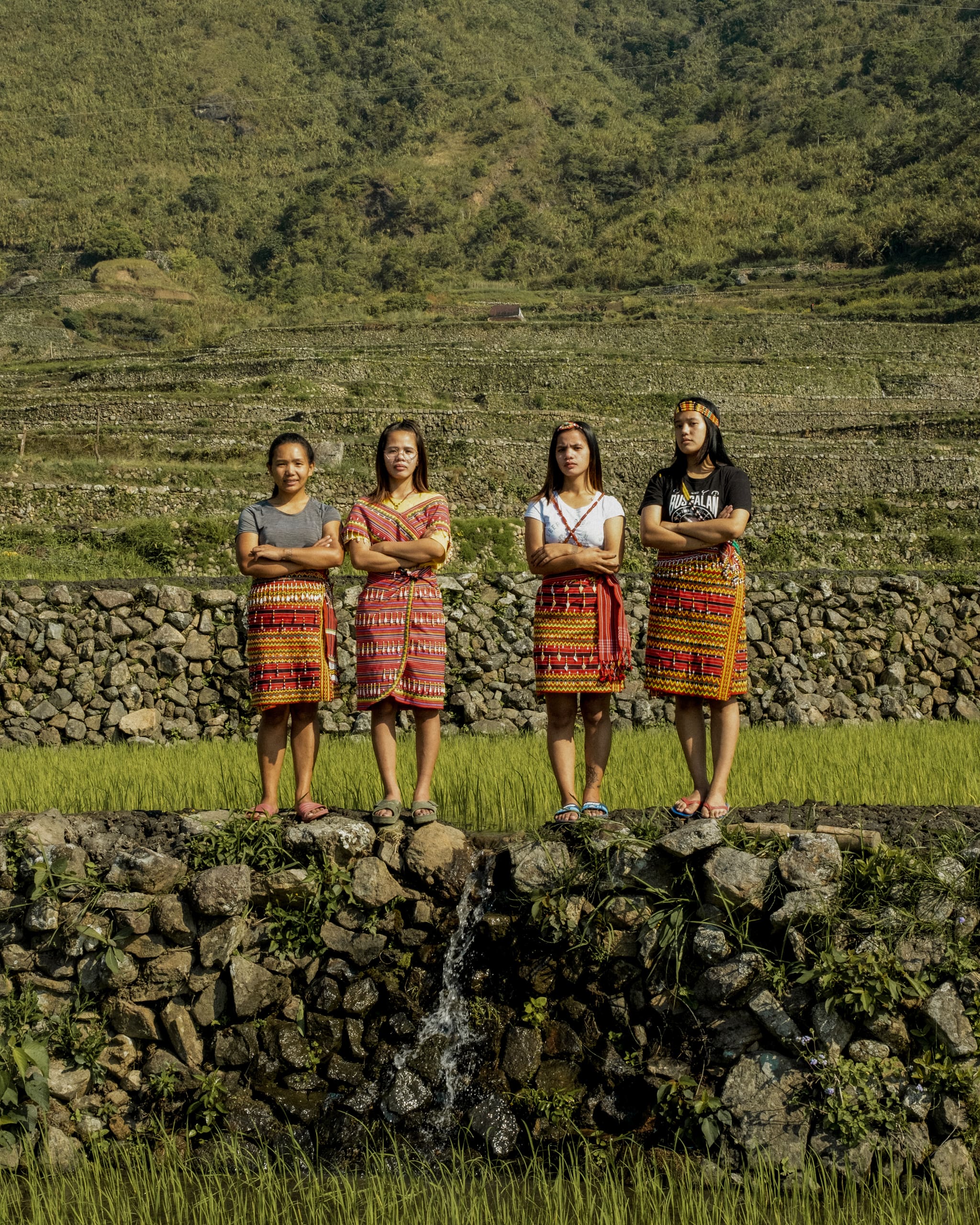Photo by Sofia Mareque
The batok tattoos represent a Filipino essence that has survived and adapted for centuries.
I have always loved the Philippines from afar. Growing up in Geneva, Switzerland, I didn’t speak Ilonggo or Cebuano, the languages of my Bacolodnon Lola and Siquijodnon Lolo, but I fell asleep to my mother singing “Ili Ili Tulog Anay” every night. I have a hard time listening to “Matud Nila” (my Lolo’s favorite song) without tearing up, and the blaring sounds of TV Patrol remind me of my childhood. The Philippines, love, and family became inseparable from me.

My relationship with the Philippines has never been complicated, but I longed to become better acquainted with it. Initially introduced to the Butbut community through the online coverage on Apo Whang-Od, the oldest living mambabatok (a traditional master tattoo artist), they captured my attention years before I even imagined visiting them one day. When I moved to Manila in February, I suddenly had this opportunity.
The Butbut of Kalinga were one of the first Indigenous Filipino communities that I came across who were being celebrated for their pre-colonial cultural heritage. They indicated to my teenage self that there were ways for me to engage with a Filipino heritage and history that was much richer and complex than I had initially thought.
I left the city on a Friday afternoon, and after a dizzying, bumpy, 14-hour car ride and a 40-minute hike, I reached the village on Saturday morning. Although the trip was long, witnessing the beauty of the Cordilleras at sunrise, as the van snaked its way along roads it could barely fit on, and seeing the region’s famed rice terraces for the first time were worth the journey.
I was taken to my homestay by our guide Gaspar, Apo Whang-Od’s second cousin, and greeted by a group of young Butbut women close to my age who explained to me the different meanings behind the tattoos.
Apo Whang-Od’s internet popularity dramatically increased the number of visitors to Buscalan since the mid 2010s, requiring more women to be trained in the art to alleviate the pressure on Apo Whang-Od. Candid about the consequences of Buscalan’s popularity, they confided that weekends and holidays are tough, and the overwhelming presence of tourists, especially those who are disrespectful, can become uncomfortable.

Aiza Ayangao, now 23, started learning the art of batok when she was 16 at the urging of her mother. “It’s our cultural tradition, and we should continue it, it’s important, it became my passion, and I have a talent for art,” she says. Learning how to tattoo became a source of financial income for her, helping pay for her studies in education and her rent.
To my question as to how she felt about other Filipinos wanting to get traditional batok tattoos, Aiza stated that she was pleased at the recognition of the tattoos as an art form. A generation ago, they were reserved for headhunters and clouded in stigma, a sentiment also echoed by Gaspar as the reason why he refused to have any tattoos himself.
Helping me choose the centipede for strength and protection, Aiza reiterated that “it became an art, and that’s so good to hear. I’m proud that I’m from Buscalan.” Part of the first generation of Apo Whang-Od’s apprentices, 18-year-old Chessy Ambatang started learning when she was just nine years old, of her own volition. She wants to be trained in Marine Transportation one day while also practicing batok, “to continue our tradition,” she says. Love Bumangil, 25, also began tattooing because she wanted to preserve their heritage: “I started learning because I want to continue our culture.”

Starting on my right arm, Chessy and Aiza spent three hours etching mountains and ferns on my skin, which bless the recipient with health and fertility. When they were finished, 29-year-old Renalyn P. Koda-Ol spent another three hours tattooing a centipede on my left arm. Renalyn’s mother started teaching her when she was 18 years old, and like the dozens of Butbut apprentices who are now trained or learning the art of batok, Renalyn took on the tradition out of desire, but also out of necessity.
The day after my six-hour-long session, the young women wore their traditional clothing for their portraits, emphasizing that they wanted to represent Buscalan’s traditions through their garments. “Traditional outfit is not just an attire. It’s a culture. It’s a religion itself,” states Aiza.
The dynamics of engaging with Indigenous culture as a non-Indigenous person were on my mind as I prepared for the trip, and long after I left. Conscious of the blurred line between appreciation and fetishization, I reflected on my position as an outsider, and what the tattoos can mean for non-Butbut Filipinos. Undoubtedly, conversations surrounding the commodification of Indigenous culture in the Philippines and its consequences on their communities need to continue. At the same time, the Butbut’s deliberate commercialization and modernization of their practice is on their own terms, as they continue to be the direct beneficiaries.

As they have been divested from warrior traditions and no longer carry their original spiritual connotations for outsiders, the tattoos have taken on new meanings. For me and many other Filipinos who aren’t Butbut and make the trip to Buscalan, the tattoos symbolize a more inclusive, all-encompassing Filipino pride, reclaiming a history that was almost lost, rather than a quest for authenticity.
Batok tattoos represent a proud acknowledgment of Filipino resistance throughout our long and painful history. They celebrate the strength of the Butbut in their continued efforts to preserve their culture. They represent a Filipino essence that has survived and adapted for centuries. And more specifically for me, my batok tattoos ultimately represent my love for the Philippines—in all of its beauty, splendor, and resilience—which means loving my Lolo’s brown skin, my Lola’s beautiful wide nose and lips, and above all, the sacrifices my family made.
After I left Buscalan, Aiza thanked me for trusting them to do my tattoos. In turn, I thank her, Chessy, Love, and Renalyn for trusting me to take their pictures, bearing with the beating sun out on the rice fields, and for welcoming me into their homes. I carry these tattoos also as a tribute to them and my unforgettable experiences in Buscalan.

